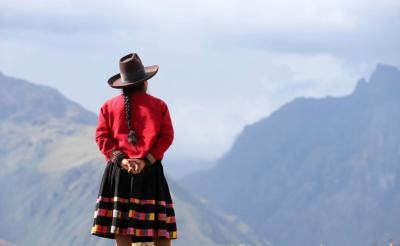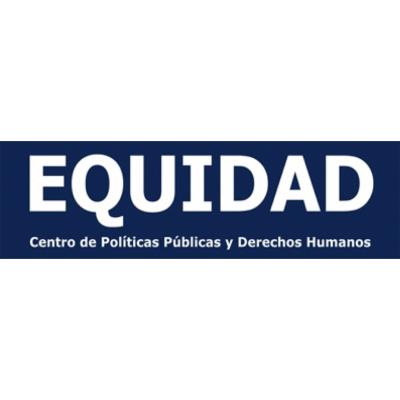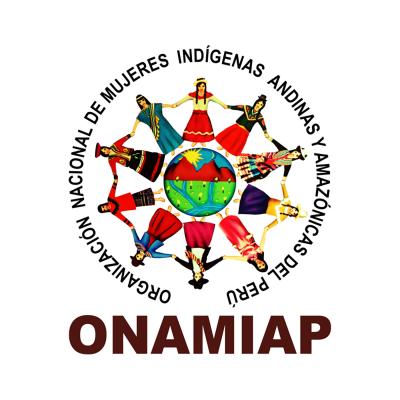Peru: What has it meant to be part of the Indigenous Navigator?

In Peru, the Indigenous Navigator is coordinated by Organización Nacional de Mujeres Indígenas Andinas y Amazónicas del Perú (ONAMIAP) and Perú Equidad.
For ONAMIAP, being a part of the Indigenous Navigator Initiative, has been an innovative experience. It has allowed the organisation to get to know the reality of the communities with whom they work, in a different and more data-driven way. Particularly the reality of progress and the respective gaps in the implementation of public policies addressing Indigenous Peoples and Indigenous women in Peru.
In the beginning, the Indigenous Navigator’s tools and framework were daunting; specifically, because the digital platform was difficult to access. As ONAMIAP explored the tools and guidance, they share that, “the community questionnaires and the matrices on Indigenous Peoples’ rights, the SDGs and international human rights frameworks were extremely important in order for ONAMIAP and these communities to monitor the implementation of them at the community level.” Currently, ONAMIAP continues to apply the community questionnaires, which allow for greater advocacy at the local level. Further, ONAMIAP contributes to the continued development of the Indigenous Navigator’s global portal, and “the more we work with the digital platform, the more we get to know the tool in greater depth.”
Implementing the Indigenous Navigator in communities across Peru has led to a revelation of just how big the implementation gap is, in terms of Indigenous Peoples’collective and individual rights and the 2030 agenda, so that no one is left behind. “In this process we were surprised to uncover just how large a gap there has been in the government’s lack of implementation of public policies at the local, regional and national level.” ONAMIAP shares, “After the data collection and presenting the results to the communities, it has been possible to show that the state has neglected them, but also imposed individualism.” The collective rights of these communities were being ignored: “the data show the inequalities and the abandonment of Indigenous Peoples and the importance of becoming aware of being a right-holder who can demand the rights to be respected.” The Indigenous Navigator is a tool that can strengthen their demands, so that the State truly guarantees the rights of Indigenous Peoples, especially in a context where extractivism continues to deprive them of their ancestral territories.
However, using a digital tool remains a challenge for some communities. Among the challenges encountered along the process, ONAMIAP mentions the lack of capacity at the community level to conduct the questionnaire and the lack of funds and resources to conduct follow-up questionnaires has affected the expansion of the questionnaires into new regions and communities. Continued funding and resource allocation will be key to continuing the INI throughout Peru. Despite the challenges of the COVID-19 pandemic, the communities and ONAMIAP consider with great urgency, the need to apply the community questionnaires, after the pandemic. This is in order to have a comparable set of data on the situation of the communities, and to better understand, post-pandemic, the impact of “economic reactivation” measures. ONAMIAP raises concerns that these measures to protect and reactivate the economy, could “work to jeopardize their Indigenous Rights in the name of quick economic recovery – further strengthening the destructive extractivist model.”
Given the impressive results from the pilot implementation of the questionnaires, ONAMIAP calls for support in implementing the questionnaires in at least 10% of Peru’s Indigenous communities. This remains an aspiration, although the COVID-19 pandemic means that “it is practically impossible to apply questionnaires until the pandemic is resolved. The Indigenous Navigator’s tools will be necessary in understanding the post-pandemic landscape, in knowing the real situation of the communities and if they really will not be left behind by 2030.”
The other national coordinator, Perú Equidad also recognises the importance of the Indigenous Navigator: “On the one hand, being part of the INI has opened the door to new direct conversations with Indigenous Peoples on the level of compliance and implementation of internationally agreed Indigenous Peoples’ rights. It has allowed Perú Equidad to build on their decades of advocacy and work, and offered a new opportunity to hear their [Indigenous Peoples’] perceptions.” […] “On the other hand, it has been an opportunity for a new way of working and collaboration with national and local actors, focusing on evidence-based advocacy.”
From the first pilot phase of the Indigenous Navigator in 2014, Perú Equidad has been testing and implementing the framework and tools. The President of Perú Equidad who has coordinated the project from the beginning, explains that the development was a complex process that required a discussion about the suitability of all the tools for application in the field.
“Although the tools had to be adapted to the national context and to the Indigenous communities, conducting the surveys was very profitable, as it allowed us to continue working directly with the Indigenous communities,” she says. “For the people that conducted the questionnaires, it was a new experience to realise that the collective rights for which they fight are actually reflected in the 2030 Agenda.” They also noted that despite that reflection, “the 2030 Agenda does not adequately reflect Indigenous perceptions or concepts.”
Access to a digital platform and tool remains an issue today, as there is insufficient infrastructure in many of the Indigenous communities living in remote areas (e.g. the Peruvian Amazon). These communities, “lack internet access, and as a result the tool is difficult to access and use directly by Indigenous Peoples.” Perú Equidad and ONAMIAP continue to play a critical role in ensuring the data can be accessed and returned to these remote communities despite these challenges.
Due to the sensitisation on the Indigenous Navigator and the FPIC process, the Indigenous communities that answered the questionnaires expressed their satisfaction with and recognition of the usefulness of having data included in a global matrix, but also requested the information be reflected on paper and returned to them in a more tangible form. Subsequently, Perú Equidad’s president shares, “they found it very interesting to make use of their own data and results to formulate proposals for pilot projects.”
In her reflection on the Indigenous Navigator as a whole, Perú Equidad’s president notes that, among the important learning experiences, Perú Equidad has experienced that it is extremely complex to develop a global project, especially one which translates essential international human rights frameworks, and where it’s not always possible to demonstrate the local realities. “Furthermore, working with the Indigenous Navigator has also shown that the perspective of achieving a more equal society in which we all enjoy the same opportunities and rights is not around the corner. The implementation gap in regards to Indigenous Peoples rights is high, and it will take continued concerted effort to bridge that gap.”
Perú Equidad’s partners also pointed to the problem of lack of internet access in most Indigenous communities in the country. Expecting these communities to collect and upload data to the platform, and having it widely used by Indigenous communities in Peru, would not be realistic without external support. If only few communities are able to fill in the surveys, it is important to reflect on the extent to which the implementation of the UNDRIP can be monitored in Peru. Although the results of the Indigenous Navigator surveys are undeniably important and have been critical for these communities, when we zoom out, we see that in Peru the questionnaire would need to be implemented in over 7000 localities. Given the infrastructure challenge, this requires the addition of significant resources.


Organización Nacional de Mujeres Indígenas Andinas y Amazónicas del Perú (ONAMIAP)
Contact
